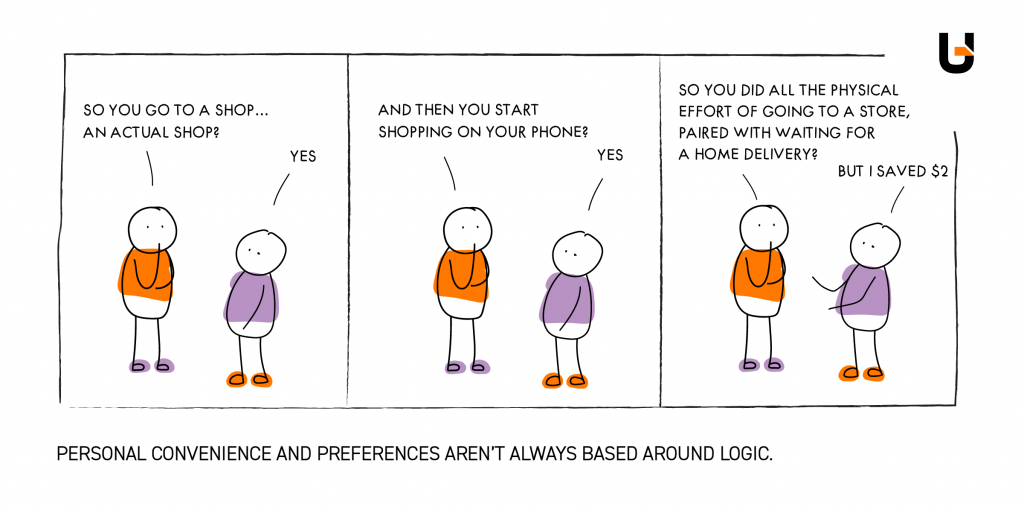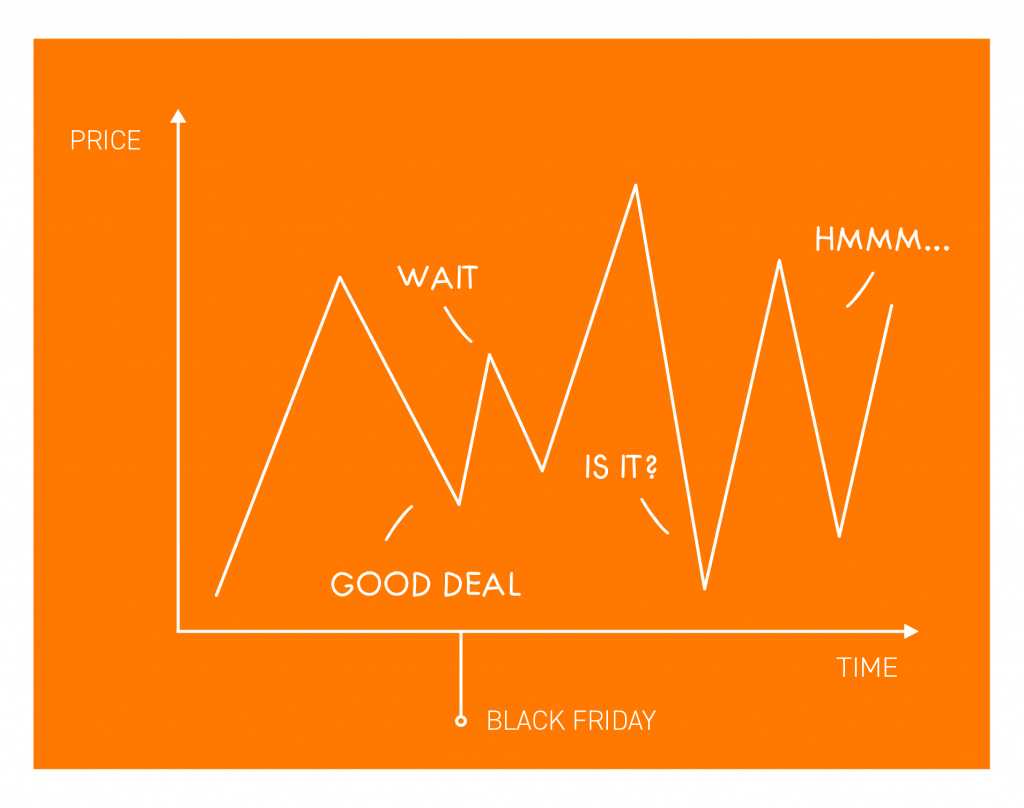E-Commerce Price Transparency / Looming Threat or Big Opportunity?
The internet has always been a bit of a pendulum for e-commerce stores. On one hand, stores can reach a wider audience than a physical outlet but, on the other hand, so can all their competitors.
Typically, companies try to swing the pendulum in their favour through tried and tested means: good marketing, good promotions. But what if the promotions aren’t as good as they seem? As the e-commerce sector becomes more crowded, consumer awareness is expanding – and many offers have been found wanting.
Historic price transparency may just become the next battleground for companies trying to gain the advantage before the pendulum swings the other way.
With that in mind, we want to discuss the rising importance of transparent prices, including what it means in the internet era, why its important and how companies can best adapt.
What Does Price Transparency Mean for E-Commerce?
Typically, price transparency refers to fully disclosing all the factors that contribute to the final cost. This includes the price of the product itself, but also shipping, VAT and any other contributing elements. In other words, if there are any ‘hidden’ costs that appear at the end of the checkout process, it’s not transparent pricing.

In e-commerce specifically, we’re also seeing a potential new factor rearing it’s head: historical price transparency. Offers and discounts are based around the RRP (Recommended Retail Price), which sounds good as a percentage. But historically users don’t always know how often a product is discounted, or when the best discounts are. They have to assume and trust in the store that the current offer is, in fact, the best.
So What’s the Catch?
Let’s say a product is 30% off for one day only, such as Black Friday. This, on its own, can be viewed as a good offer. But what if it’s discounted at 45% later or earlier in the year? In such situations, customers can feel cheated.

And the big picture: how many times should this happen before customers begin to feel frustrated enough to look elsewhere?
For companies that make their own products, this is already tricky, as they can implement their own RRPs and actual asking prices to influence decisions. But for products sold through other businesses, there’s still a catch. Users are looking for the best deals. If they find a company that’s more transparent or easier to follow, their loyalty is similarly persuaded.
Why is Price Transparency Important Now?
Price transparency is critical because the average shopper is becoming smarter – and significantly more aware of their options. Previously, customers would buy in-store, prioritizing convenience over costs. Then they started (and continue) to use smartphones to check offers with competitors. Now, they’re looking to see if deals really are too good to be true.
Unfortunately, they’re often proven right, which leads to a significant drop in trust, as well as the previous zeal for such so-called ‘special’ offers and promotions.
For example, last year (2021, as of writing), the UK’s consumer watchdog Which? noted that over 90% of Black Friday deals were not, in their own words, “what it’s all cracked up to be.” Many items could be found at a cheaper price 6 months prior. Unfortunately, the same advisor noted almost 90% of ‘deals’ the previous year had the same problem. Similar trends have also been observed around the world.
The result? 2021 marked a slight drop in total revenue for Black Friday and Cyber Monday. Likewise, with consumer watchdogs and other organizations calling these practices out, it’s only a matter of time before third party tools catch-up. We have the technology to track products online, and to track the selling price over a period of time. With enough data, users can determine when the best time to buy actually is and, in consequence, which promotions aren’t actually worth their time or attention.
The Rise of Marketplaces
Online marketplaces are growing. With current growth at around 15% a year, the marketplace sector is predicted to match the directly match the e-commerce sector in size by 2025. In other words, companies and their products will find themselves closer and closer together. What’s more, it’s in the marketplace’s interest to encourage – and outright obligate – transparent prices.
We’ve previously commented that Walmart has overtaken eBay as the 2nd largest online sales platform in the US, losing only to Amazon. But all three fall under marketplaces, as they support multiple vendors. Amazon and Walmart both sell their own products, of course, but even on their home turf, they’re competing with others.
Here, shoppers are already looking for the best deals. Their awareness of different vendors can only increase with this added attention. And since pricing and other data is published outside of your own systems, you have even less control over how it is collected and measured overtime.

So What Can E-Commerce Stores Do?
Most e-commerce stores already follow the basic principles of price transparency – but not all. Recent studies show that 49% of shoppers abandon their carts because the additional costs are too much. 17% also left because they couldn’t calculate such costs upfront to begin with.
To enable the user, most online stores disclose logistical costs and other factors upfront, so very few people challenge the nature of transparent pricing itself. It’s the new area of transparent offers and historical pricing that may catch them unawares.
Customers are increasingly attentive to these details and, depending on the product sold, will slowly learn to bide their time for the right opportunities. Companies in these situations have a few options:
- Be fully transparent with pricing. Showing the average pricing for a product, specifically in terms of the year-long average, as well as the highs and lows, will greatly inform the consumer. Sure, a current offer might not have been the best, but this will help them make the choice: do they wait around a few months to see if it’s a few percentage points cheaper, or buy now knowing its still a ‘relatively good’ opportunity?
- Consider downselling and other less conventional means. Downselling occurs when companies actively show users a cheaper option – they trade the revenue of one sale for the invested loyalty of the customer. Transparency plays a big role here, naturally.
- Make your actual offers worth it. Of course, the easiest solution is to ensure that your own company doesn’t get a reputation for less-than-honest promotions. Transparency here, especially in regards to the first point, would prove a simple way to ensure credibility.
However, we’d advise that this is best suited for companies that are noting their offers are less effective, that customer loyalty and retention is dropping or – in the worst case scenarios – are actively being called out for having such problematic promotions and poor price transparency.
For those companies that actually do have great offers and the data from your e-commerce store suggests your customers are aware of it… well, keep doing what you’re doing! 😎







